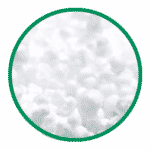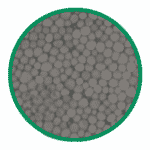Polystyrene or polypropylene? Expanded or extruded? Shape memory or not?
Choosing the perfect raw material for the right application is not an easy task. There are several types of plastics, specifically polymers, allowing you to achieve similar results. It’s not an easy choice!
Let’s see your different options.
Polystyrene and its Variations
EXPANDED POLYSTYRENE (EPS)
Expanded Polystyrene is the most popular choice. Made from 98% air and only 2% material, it is particularly lightweight. It is easy to mould or cut into almost any shape. EPS is often found in packaging products, insulation boards, lightweight fill blocks, insulated boxes, beanbags, etc. It can be used in both simple and complex projects.

EPS WITH GRAPHITE (NEOPOR®)
Insulation factor of the EPS with graphite, also called NEOPOR®, is superior to regular expanded polystyrene. It is a very powerful material even when manufactured in low density. It is used when insulation specifications require higher thermal resistance. Its performance is almost 30% higher than the EPS when comparing two insulation boards with the same dimensions.

Ecological Expanded Polystyrene
BIODEGRADABLE EPS
Biodegradable expanded polystyrene exists! It can be used to make any product that must decompose. To start the decomposition process, it simply needs to be buried. The process takes 267 days. It is a significant advantage when designing products that are difficult to recycle, such as insulated boxes used in remote areas or in the woods.

EPS WITH RECYCLED CONTENT
Every day, we produce parts with 5% to 100% recycled content. The beads coming from the granulated parts dedicated to recycling are mixed with virgin material beads at the customer’s desired ratio. We can mould or cut this material to make the desired part. Expanded polystyrene with recycled content is typically used in packaging, blocks used in lightweight fill projects, insulated boards and forms, stuffed products and more.

Polypropylene and its Variations
EXPANDED POLYPROPYLENE (EPP)
EPP allows production of slightly more high-end products.
Expanded polypropylene is similar to EPS, but what makes it stand out is its shape memory. This feature allows the material to retain its initial structure, allowing deformation without breakage. Thanks to this property, this raw material is used as a product component in many sectors such as the automotive industry, with critical impact resistance requirements, or the flotation sector with needs for low water absorption and long term sturdiness. Even the furniture industry uses EPP to reduce production costs by having reusable and shock-resistant packaging.
EPP is also convenient for very fragile items requiring superior packaging. Unlike EPS, it can be subjected to several impacts without losing its physical properties, ensuring the safety of your part from point A to point B. This material is resistant to petroleum and chemical products, to solvents, and to glass fiber.

HYBRID EXPANDED POLYPROPYLENE (HEPP)
Hybrid expanded polypropylene offers superior flexion than EPP. This blend of polypropylene and polyethylene is ideal for any product requiring better flexural strength. As EPP, this material is resistant to petroleum and chemical products, to solvents, and to glass fiber.

ANTISTATIC EXPANDED POLYPROPYLENE
It is possible to add antistatic feature to EPP. It is a critical feature in some sectors such as electronics or fiber-optics in which quality and integrity of the product often depends on its packaging. This is why it is important to choose the right material for the right application!

Polyethylene and its Variations
EXPANDED POLYETHYLENE (EPE)
Expanded polyethylene is often used for its smooth surface. It is also famous for its chemical resistance and great flexibility: EPE is shock resistant and does not deform due to strong vibrations or impacts. Its elasticity makes it critical for protection of fragile or valuable products. On the other hand, some industries prefer EPE because it is non-abrasive!

ARCEL®
The combination of expanded polystyrene (EPS) and expanded polyethylene (EPE) provides a lightweight, flexible and durable product. This copolymer not only has a better mechanical strength, but it also has a greater shape memory than expanded polystyrene.

Bonus: Two Extruded Plastics Available for your Needs
ELASTOMER
This extruded polyethylene offers great flexibility and a non-abrasive finish. It is generally used for packaging when the aesthetics of your part is critical.

ETHYLENE – VINYL ACETATE (EVA)
It is our product with the most elasticity and flexibility! It is even more efficient on this level than expanded polyethylene or elastomer. It also has a great impact resistance. It is mostly found in sports protection products and non-abrasive packaging for parts with critical aesthetics of the parts is important.

The Next Step
As you can see, choosing the right material for your project is not so simple. If you still have questions about certain properties, do not hesitate to talk with an expert in the field!
On the other hand, if you know that you have made the best choice of material for your project, consult our various manufacturing processes to get a better idea of the ways we can manufacture your products.